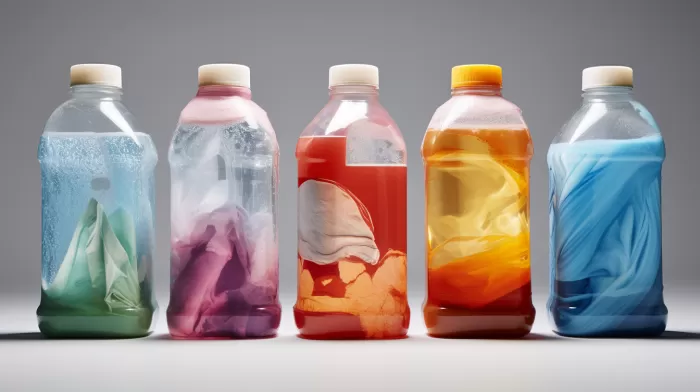You might be surprised to learn that many common household products, such as shampoo, car interiors, shower curtains, and insect repellents, contain toxic substances called phthalates. While these toxins can pose a threat to everyone’s health, they may pose an even greater danger to pregnant women and their unborn children.
One study conducted at the Columbia Center for Children’s Environmental Health at the Mailman School of Public Health in New York found that when pregnant women were exposed to high levels of phthalates, their babies were much more likely to develop asthma later in life. Specifically, the asthma risk for children between the ages of 5 and 11 increased by 72% after being born to women with the highest levels of the phthalate butylbenzyl phthalate (BBzP). For those with the most di-n-butyl phthalate (DnBP), the risk increased by 78%.
Considering the rising number of children developing asthma, it’s crucial that we understand the potential causes of this epidemic in order to better protect young children from this debilitating condition.
Phthalates and Their Dangers
Phthalates are chemical compounds commonly used as plasticizers, solvents, and additives in various products. They’re found in a wide variety of everyday items, including:
- Cosmetics and personal care products (shampoos, body washes, and lotions)
- Vinyl flooring and other building materials
- Toys and childcare products
- Clothing and textiles
- Insecticides
However, the potential health risks posed by these chemicals are increasingly coming under scrutiny. In addition to the link between phthalate exposure and asthma, studies have also found associations between phthalate exposure and:
- Hormone disruption and endocrine system dysfunctions
- Developmental and reproductive problems
- Increased risk of allergies
- Decreased sperm count and quality in men
- Metabolic syndrome and obesity
Because pregnant women and their fetuses are especially vulnerable to the detrimental effects of phthalates, it’s important for expectant mothers to be aware of the potential dangers and take steps to limit their exposure.
Tips to Reduce Exposure
Although it might seem overwhelming to try to limit your exposure to these harmful chemicals, there are some straightforward steps you can take to reduce your risk. Here are some recommendations:
1. Choose phthalate-free products
Look for items labeled as “phthalate-free” or “fragrance-free,” as fragrances often contain phthalates. While it might be challenging to find products without phthalates, due to a lack of clear labeling and regulation, being conscious of what you’re purchasing can help mitigate your exposure.
2. Opt for natural, unscented products
Whenever possible, choose natural, unscented products. This is particularly important for personal care items, as fragrances can be a significant source of phthalate exposure.
3. Minimize the use of plastic
Avoid using plastic containers, particularly for storing and heating food. Instead, opt for glass or stainless steel options. If you must use plastic, ensure that it’s labeled “phthalate-free” or “BPA-free.”
4. Limit exposure to new cars and flooring
The “new car smell” is actually the result of airborne phthalates. Similarly, new flooring can be a rich source of these chemicals. If possible, avoid riding in new cars or having new flooring installed while pregnant to reduce your exposure to phthalates.
5. Wash your hands frequently
Phthalates can be found in dust and dirt, so frequent hand washing can help limit your exposure through skin contact.
6. Improve indoor air quality
Using air purifiers or opening windows frequently can help improve the air quality in your home, reducing the levels of airborne phthalates.
By following these suggestions and remaining vigilant about the products you use and the environments you expose yourself to, you can help protect yourself and your unborn child from the potential dangers of phthalates. As research continues to uncover the harmful effects of these prevalent chemicals, it’s more important than ever to take steps to limit our exposure and safeguard our health and that of future generations.



